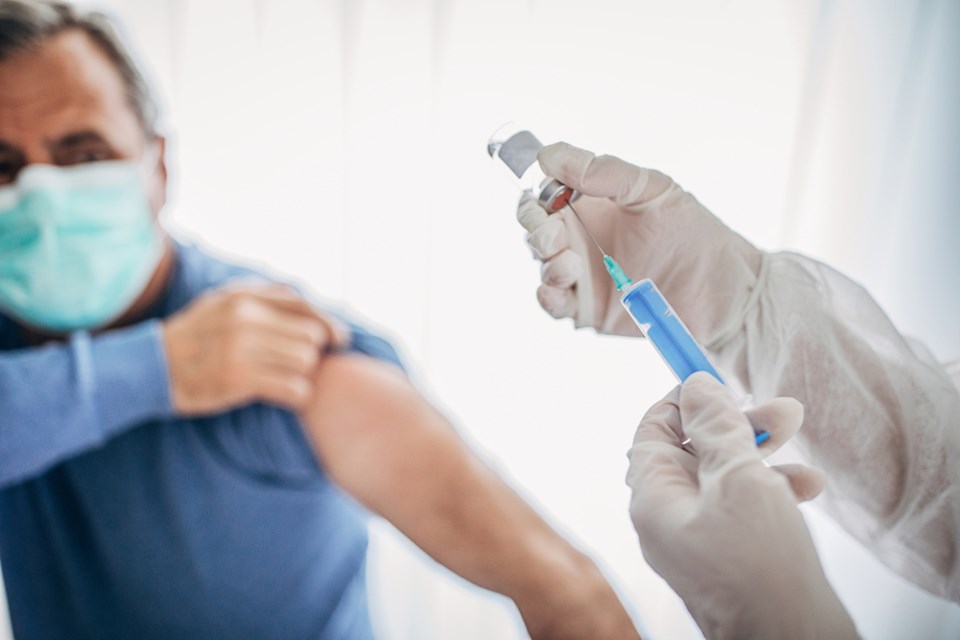As the daily COVID-19 cases continue to decline in number, more attention is being paid to our vaccination efforts.
The good news is the province has exceeded the 75% mark for first-dose vaccinations and it reached that number fairly quickly. Outside of the Maritimes and the territories, only Quebec can boast of a higher vaccination rate in Canada.
We appear, however, to have hit a bit of a wall when it comes to those first dose vaccinations as the vast majority of daily vaccine doses are used for second shots. Our first dose vaccination rate – which for weeks was rising about one percentage point a day – is now inching upwards by about 0.2 percentage points a day.
As a result we should pass the 80% mark in early July and perhaps the 85% level by the end of next month.
Our second dose rate is rising much quicker – about 1.2 to 1.5 percentage points a day. We could conceivably hit 80% by the end of July.
Boosting first doses is proving to be a grind for public health officials. There seems to some levels of vaccination “hesitancy” in some areas and age groups.
Take the Peace River region, for example. The two largest cities there, Dawson Creek and Fort St. John, have been hovering around the 50% vaccination level for weeks now and residents there do not seem to be in a rush to be vaccinated.
While we are administering about 50-60,000 doses a day province-wide (the record is more than 81,000) very few are occurring in those two towns. Over the previous 10 days going into the past weekend, fewer than 700 people living there opted to be vaccinated, even though special clinics (including a drive-through) have been set up there.
A number of other communities have vaccination rates that are noticeably lower (i.e. below 70%) than the provincial average of more than 77%. Most of them are small towns or rural areas.
They include Nelson, Cranbrook, Armstrong, North Okanagan, Kettle Valley, Quesnel, Smithers, Powell River and Central Vancouver Island.
Most Metro Vancouver towns and municipalities have vaccination rates that greatly exceed the provincial average but there are some notable exceptions, including parts of Surrey and Richmond (although both municipalities have greatly boosted their rates in recent weeks), Langley, Aldergrove, north Mission and north Chilliwack.
When it comes to age groups, it is notable that the B.C. Centre for Disease Control last week singled out one age cohort in particular for unwanted attention. “Vaccination rates among 30 year olds have slowed down … early signs of slowing among 20 year olds,” it stated in its weekly data report.
Indeed, the province’s vaccination data shows that when it comes to making a booking to be vaccinated, the 35-39 age group has the lowest average of daily bookings with about 967 a day heading into the weekend.
People in their late 20s also have a low booking rate at just 1,090 a day. Interestingly, the age group of young people with the highest booking average is the 18-24 group, with 1,302 a day (only people in their 40s and 50s have higher booking rates, and most people older than that have had their two doses).
Our vaccination efforts have been stellar, for the most part. We are heading towards herd immunity but more work needs to be done in order to get there.
That means residents in some communities – and folks of a certain age – need to get that first shot in their arm.
Keith Baldrey is chief political reporter for Global B.C.


